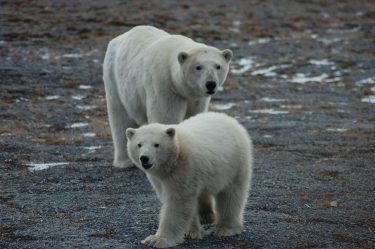
Not all polar bears are in the same dire situation due to retreating sea ice, at least not right now. Off the western coast of Alaska, the Chukchi Sea is rich in marine life, but the number of polar bears in the area had never been counted. The first formal study of this population suggests that it’s been healthy and relatively abundant in recent years, numbering about 3,000 animals.
The study by researchers at the University of Washington and federal agencies is published Nov. 14 in Scientific Reports, an open-access journal from the Nature Publishing Group.
“The very things that make polar bears so fascinating — their remote habitats, long-distance movements, and reliance on shifting and ephemeral sea ice — also make them incredibly hard to study,” says co-author Sarah Converse, a UW associate professor at the School of Aquatic and Fishery Sciences and the leader of the U.S. Geological Survey’s Washington Cooperative Fish and Wildlife Research Unit. “The research, the first empirical estimates of abundance and survival for the Chukchi Sea population, suggests that they’re currently stable despite sea ice loss. While there is a limit to how much sea ice loss a polar bear population will sustain, we have seemingly not yet reached that limit in the Chukchi Sea.”
Read more at UW Today »
